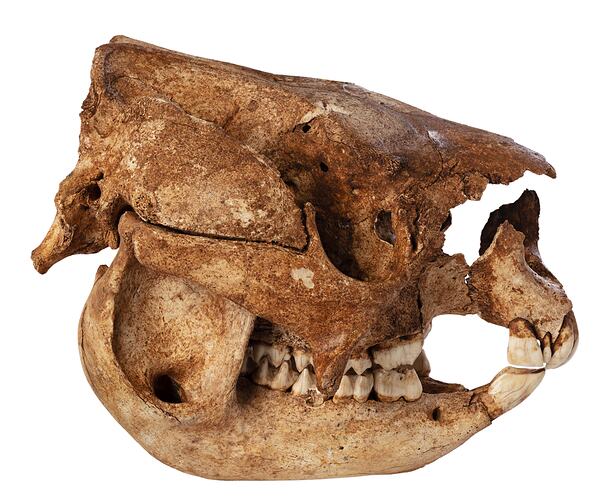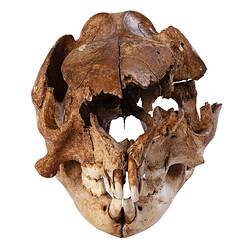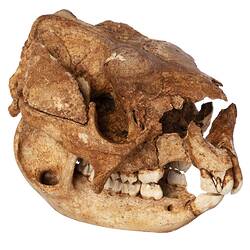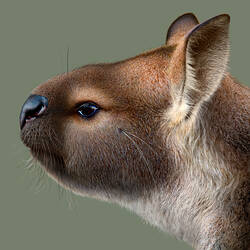Summary
Simosthenurus occidentalis was a short-faced kangaroo that lived during the Pleistocene Epoch in Australia. This fossil skeleton is one of the most complete examples of the species ever found. It was retrieved from deep underground in a cave north of Buchan, East Gippsland. The retrieval took place over two years, and was carried out by a Museums Victoria-led team including recreational cavers and Parks Victoria rangers.
Simosthenurine kangaroos were browsing herbivores that fed on woody shrubs and herbs. They were of similar size to large living kangaroos but much more robust - weighing up to 120 kilograms. Simosthenurus occidentalis was first named in 1910, but only on the basis of fragmentary skulls and teeth. Well-preserved fossil remains such as this specimen suggest that it may have strode bipedally rather than hopped.
The skeleton is thought to be at least 49,400 years old. This is based on radiocarbon dating of charcoal fragments in closely associated sediment. Its age makes this particular Simosthenurus occidentalis one of the last of its kind. From current knowledge, the species went extinct around 46,000 years ago during a major extinction pulse among the Australian megafauna. Up to 85% of large-bodied (greater than 40 kg) mammals, reptiles and birds went extinct in Australia at this time.
Specimen Details
-
Taxon Name
-
Author and date of publication
(Glauert, 1910)
-
Date Identified
07/04/2022
-
Identified By
Tim Ziegler - Museums Victoria
-
Category
-
Scientific Group
-
Discipline
-
Collecting Areas
-
Type of Item
Taxonomy
-
Kingdom
-
Phylum
-
Subphylum
-
Class
-
Superorder
-
Order
-
Suborder
-
Family
-
Genus
-
Species Name
occidentalis
Geospatial Information
-
Continent
-
Country
-
State
-
District
-
Nearest Named Place
-
Era
Cenozoic
-
Period
Quaternary
-
Epoch
Pleistocene






